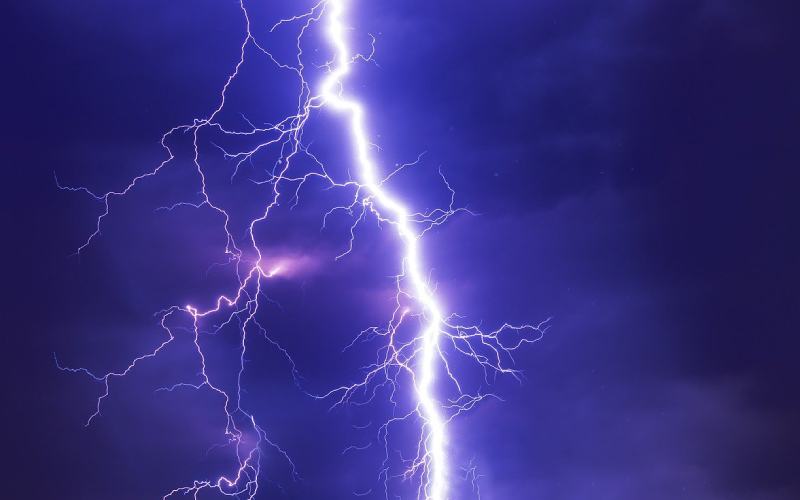A one-of-a-kind terawatt laser installed on Mount Säntis in the Swiss Alps will demonstrate how lasers can control and safely divert lightning.
Almost 270 years since Benjamin Franklin invented the lightning rod, lightning protection is still based on this same concept. Although we can’t deny the benefits of lightning rods, major drawbacks do remain. Installing permanent lightning rods isn’t often feasible, and lightning rods also only protect against the direct effects of lightning. By attracting lightning strikes to conduct their current to the ground, lightning rods may even cause additional and more severe indirect effects, such as electromagnetic interference and voltage surges in devices and appliances.
Decades ago, lasers were identified as promising candidates to overcome these hurdles. Drawing on relevant research experience, researchers working on the EU-funded LLR project developed a new technique for lightning protection based on a 5-tonne, 9-metre-long super laser. “The laser lightning rod is currently one of the most powerful lasers in its class,” states laser engineer Clemens Herkommer of LLR project partner TRUMPF Scientific Lasers in an article posted on ‘Photonics Media’. Herkommer has spent the last four years developing the unique laser system.
The project team has now installed their kilohertz-terawatt laser system at the top of Mount Säntis with one ambitious goal: to show that lasers can control and safely divert lighting strikes. The aim is to use the high-repetition terawatt laser system to stimulate upward lightning flashes from the 123-metre-tall telecom tower at Säntis. This will initiate and guide downward lightning strikes from thunderclouds to places where they won’t cause damage.
Lightning has immense destructive power. It can cause power outages and forest fires, damage electronic systems and infrastructure, and even lead to the injury or death of humans and livestock. The damages it causes amount to billions of euro every year. With climate change and the consequent rise in the frequency and severity of storms, damages from lightning will probably increase in the future. Redirecting lightning using lasers would therefore help protect vulnerable sites such as airports, forests, skyscrapers, and chemical and nuclear power plants.
How the laser works
The laser system is being tested at Säntis as follows. The laser will fire 1 000 ultrashort laser pulses into the atmosphere each second. By doing this, the “super laser” will generate a long ionised channel called a laser filament towards the clouds. The laser filament will act as a preferential path for the lightning, deviating it away from vulnerable sites. “By shooting a thousand laser pulses a second into the clouds, we can safely discharge the lightning and make the world a little bit safer,” observes Herkommer.
Säntis is considered one of Europe’s lightning hotspots. It sees about 100 lightning bolts each year, mostly concentrated during peak thunderstorm activity between May and August. The LLR (Laser Lightning Rod) team will be testing the laser’s effectiveness on the mountain over the next few weeks. Initial results are due by the end of summer.
For more information, please see: LLR project website.
The article Super laser lightning rod set up in the Swiss Alps was originally published by CORDIS | European Commission.
Feature image by FelixMittermeier from Pixabay.


